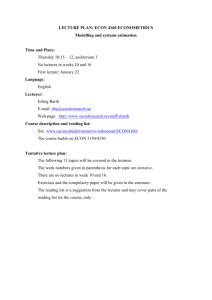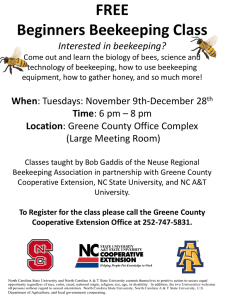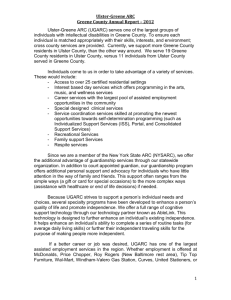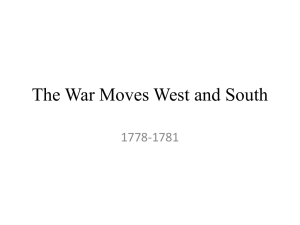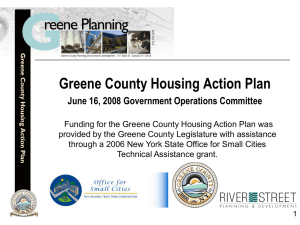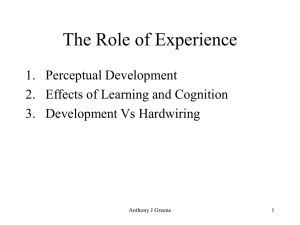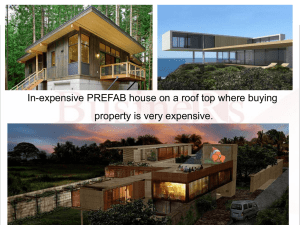here - American Building
advertisement
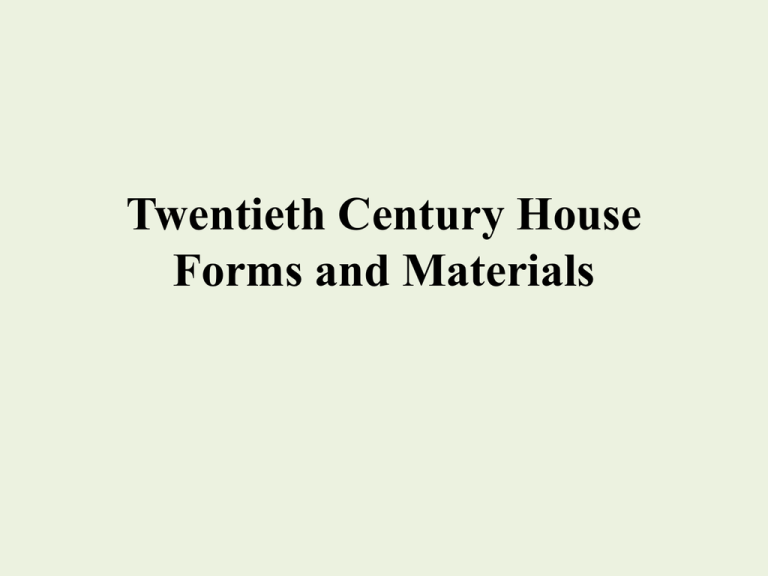
Twentieth Century House Forms and Materials Bungalows 1890-1940 Bungalow has its roots in Stick Style, particularly as expressed in the Craftsman movement as popularized by Gustav Stuckey in his magazine, The Craftsman. It was inspired by Charles and Henry Greene, who practiced in Pasadena, California between 1893 and 1913. Their bungalows began about 1903. These houses are contemporaneous with Prairie Style buildings and were popularized through style books and magazines as were the Prairie and Colonial Revival buildings. It has enormous variety of forms and finishes. Bungalow houses continue to be built up to World War II, but are rare from the rebuilding after that War. Often called Arts & Crafts houses; Craftsman bungalow or A & C bungalow Term “bungalow” derived from words used to describe houses built India for English colonists by local laborers Influenced by Arts & Crafts movement in England Gustav Stickley & William Morris Originated in California in 1901 Charles Sumner Greene & Henry Mather Greene Period of Popularity: 1905 - 1930 Blended elements of Arts & Crafts, vernacular folk houses, Stick Victorian, Romanesque and Asian architecture and design Popularized through magazines Numerous pattern books promoted the style Utilised by Sears, Aladdin Homes and other mail order kit house companies Provided affordable single family houses for new suburbs Helped satisfy high demand for housing post WWI in Defining Features Low pitched gabled roof Wide, unenclosed overhanging eaves Exposed roof rafters; simple decorative beams and braces Full or partial width one story porches Square or tapered square columns as porch supports Solid masonry piers supporting columns; or solid porch balustrade Gabled dormers Wall cladding is typically wood clapboard or wood shingles with stone, brick, concrete block and stucco used in North & Midwest Bungalows, 1890-1940 • • • • • Charles and Henry Greene Diverse origins, American production Contemporary to Prairie style Middle class worker housing Popularized through style books, magazines (The Craftsman, Ladies’ Home Journal) • Mail order companies (Aladdin, Sears & Roebuck) Bungalows, 1890-1940 Characteristics • 1 or 1 ½ story • Distinctive roof w/ low pitch and overhanging eaves • Porches and posts (battered piers) • Asymmetry Sears and Roebuck advertisement Irwin House, Pasadena, Calif. 1906 (Greene and Greene) Gamble House, Pasadena, Calif. 1908, (Greene and Greene) Gamble House, Pasadena, Calif. 1908, (Greene and Greene) Gamble House, Pasadena, Calif. 1908, (Greene and Greene) Gamble House, Pasadena, Calif. 1908, (Greene and Greene) Sears, Roebuck & Co. Kit House catalogue 1908 - 1914 “The Osborne” Sears, Roebuck & Co. 1915-1920 FOUR Subtypes Front Gabled Roof ~35% Full or partial width one story porches under main roof or with separate extended roofs Typically 1 story; 1½ - 2 story examples exist as well 10% have dormers Cross Gabled Roof ~25% Partial width front gabled porch forms cross gable 75% of these are one story 20% have dormers Side Gabled Roof ~35% 1½ story with centered shed/gable dormers Porches usually under main roof; often break in slope Common in NE & Midwest Hipped Roof <10 % 1 & 2 story examples are equally common Similar to simple Prairie house Four Square Sears, Roebuck & Co. Kit House catalogue 1908 - 1914 American Foursquare American Foursquare American Foursquare Lustron Homes and other modular components 1. Lustron House, 411 Bowser Ave., CHESTERTON, Porter County, IN. Originally designed by Roy Burton Blass and Morris H. Backman. Interior view. 2. Armco-Ferro House, 251 Lake Front Dr. (moved from Century of Progress exhibition in Chicago,IL 1933), BEVERLY SHORES, Porter County, IN. Robert Smith, Jr., Cleveland Ohio (architect). Sponsored by the American Mill Rolling Company and the Ferro Enamel Corporation. Manufacturer Plate HABS Drawing of first floor.

